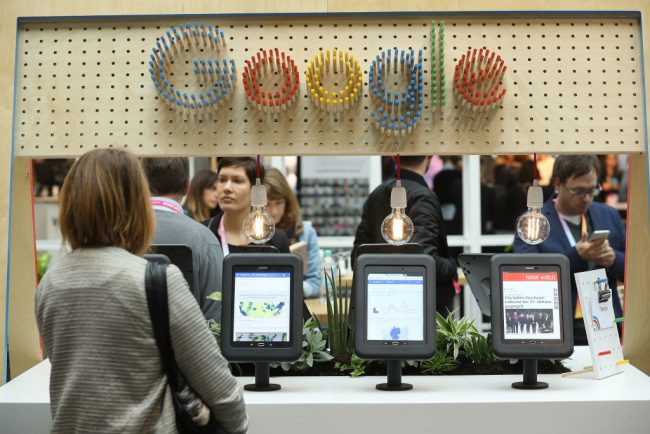News consumers of the future could be reading stories scraped together by sophisticated data-analyzing robots rather than human journalists, if Google has its way.

On Thursday, the Press Association, the U.K.’s national news agency, announced that it received €706,000 (just over $1 million CAD) from the tech giant for its Reporters and Data and Robots (RADAR) initiative.
A collaboration between the Press Association and data-driven news startup Urbs Media, RADAR aims to set up an artificial intelligence-fueled news service that will churn out tens of thousands of news stories a month using publicly available data.
READ MORE: Newspaper publishers, union call on feds to set up $350-million journalism fund
The program will benefit everyone from big-name news organizations to hyper-local outlets and bloggers, Press Association editor-in-chief Peter Clifton claimed.
According to the Press Association, RADAR won’t necessarily herald the end of the flesh-and-blood scribe, but will rather enable the harnessing of AI to produce a volume of stories that would be impossible to match manually.
READ MORE: Will you be replaced by a robot? A look at what jobs are going to the bots
The envisioned workflow would begin with human journalists identifying open data sets and “creating detailed story templates across a range of topics including crime, health and employment.” The robotic reporter would then take over and scan the data, use language generation software to craft together story text and automatically generate relevant photos and video.
Press Association clients would then be able to use a special distribution platform to identify news stories of interest to their audience.
WATCH: The role of journalism in a post-truth age

Content automation isn’t a totally novel concept in the news industry however.
In 2014, the Associated Press began using algorithms to produce finance stories using data gleaned from corporate reports. AP estimated that the algorithms freed up 20 per cent of journalists’ time, allowing them to focus on more complex, qualitative tasks.
Rival agency Reuters meanwhile partnered up with automated video creation platform Wibbitz to offer digital videos that are automatically packaged using Reuters text and graphics, as soon as a news story breaks.
Even reader inputs are no longer exempt from robotic massaging – the New York Times has been using special software to automatically moderate user comments on online stories. The technology was developed via tech incubator Jigsaw, set up by none other than Google.
WATCH: Did Donald Trump encourage violence against journalists?

Shockingly, not all journalists are sold on the AI infiltration.
A study conducted by Professor Neil Thurman of LMU Munich found that journalists from leading news organizations had several reservations when shown an automatically generated sports story. “I would never, ever, ever have written a story like that,” one BBC journalist admonished, while a CNN reporter said the story was repetitive and lacked nuance.
READ MORE: Journalists’ brains operate at below average due to excessive booze and caffeine: study
Nevertheless, it looks like AI in journalism is here to stay, with the Press Association’s Clifton hailing the RADAR program as a “game-changer.”
“We have already provided an outline of our plans to some of our regional customers, and they have been universally positive. One described it as ‘genius’!” Clifton raved.
“At a time when many media outlets are experiencing commercial pressures, RADAR will provide the news ecosystem with a cost-effective way to provide incisive local stories, enabling audiences to hold democratic bodies to account.”
Funding for RADAR comes from Google’s Digital News Initiative, billed as aiming to “support high-quality journalism through technology and innovation.”




Comments